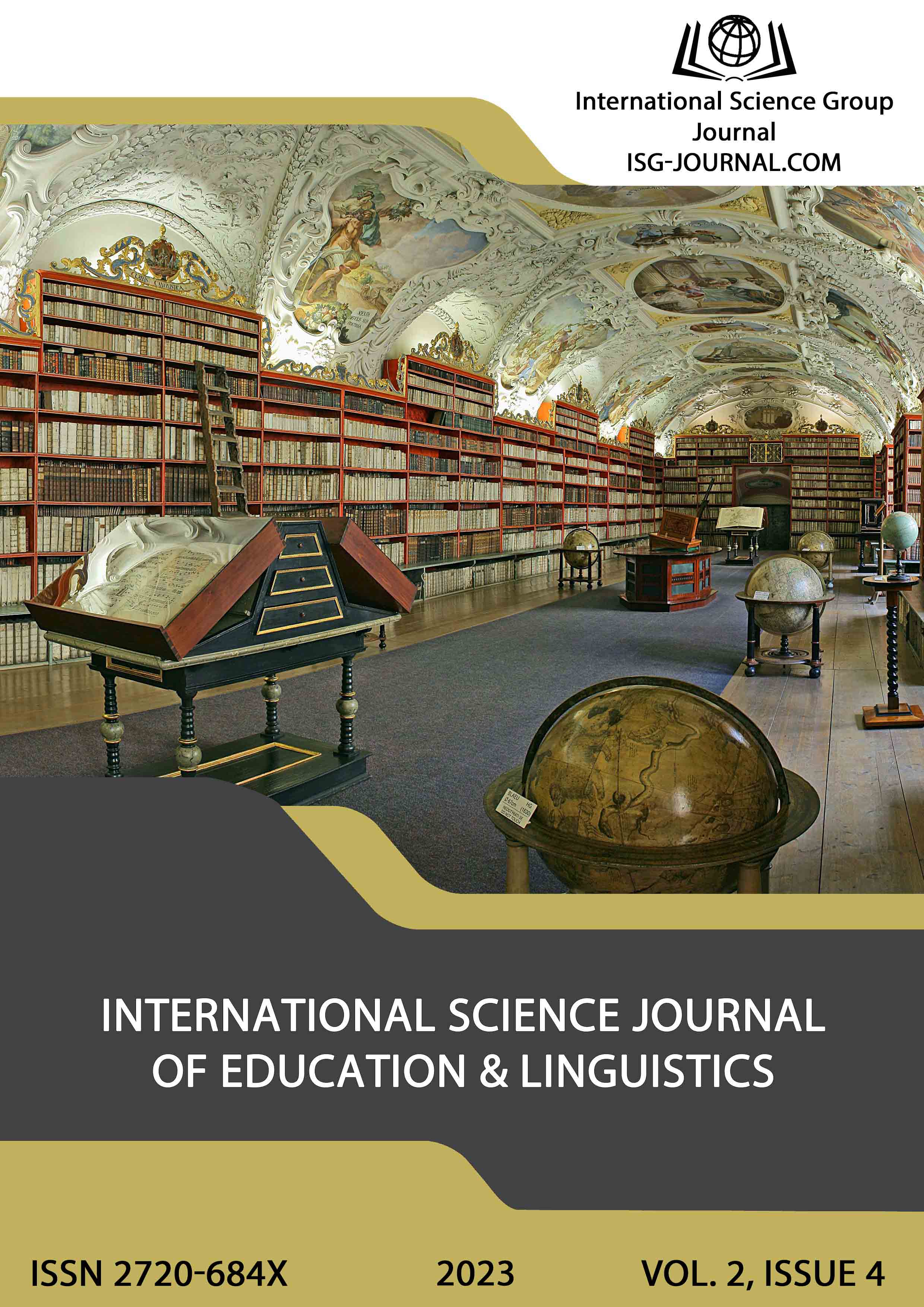Features of legal terminology translation
DOI:
https://doi.org/10.46299/j.isjel.20230204.09Keywords:
legal term, semantics of the term, national term system, translation transformationsAbstract
The article presents the results of theoretical research in the field of legal terminology translation. Features of the functioning of legal terms in English and Ukrainian have been established. A legal term designates a concept and determines its semantics. Its meaning should be clear and fixed. Legal terminology covers terms that belong purely to the professional sphere and are lexically, semantically, and grammatically related. The characteristics of national terminology systems are described. The national terminology system has the following characteristics: the presence of national terms and their synonymy; the semantics of the term is determined by the primary source; the laconic nature of the terms and the possibility of their derivation; development of the term system due to borrowings. The unambiguity of the term, its independence from the context is leveled due to polysemy. It is not always easy to choose the right variant of the term translation. The existence of variability in the choice of translation indicates its origin from different legal systems. The difficulties of translating legal terminology have been clarified. The following difficulties of legal texts’ translation are highlighted as following: lack of equivalent terms; a specific legal system is served only by national terms; use of legal language only for professional purposes; some terms do not have the only one definition. The translation of legal terms takes place in two directions: analytical and synthetic. Defining the strategy of translating legal terms is planning the use of certain translation tools, which involves: analysis of the meaning of the term in the original text; comparison of the functioning and meaning of the term in two languages; selection of the respondent or counterpart; the use of translation transformations in the absence of a respondent, namely: transcription, transliteration, tracing, etc. To select a Ukrainian equivalent or counterpart during translation, the following are used: descriptive translation; choice of analogue; explanation of transliteration; semantic tracing; consecutive translation of each word of the word combination of the term; application of descriptive translation.
References
Білоконь, К. (2018). Особливості перекладу термінів юридичної сфери з англійської мови. Науковий вісник Херсонського університету, 5, 55-60.
Глінка, Н. (2011), Особливості функціонування та прийоми перекладу англійської юридичної термінології. Теорія та практика перекладу. Київ: КПІ.
Нікіфорова, С. (2012). Особливості юридичної термінології в англійській мові. Збірник наукових праць Харківського національного педагогічного університету ім. Г. Сковороди. Харків: «Право», 173-179.
Селиванова, Е. (2017). Перевод юридической терминологии. Науковий вісник кафедри Юнеско КНЛУ. Серія: Філологія, Педагогіка, Психологія, 34, 148-152.
Толстик, В.А. (2013). Проблема класифікації юридичної термінології. Актуальні проблеми економіки та права, 2 (26), 176-182.
Cao, D. (2010). Legal Translation. Handbook of Translation Studies. Eds. Yves Gambier, Luc van Doorslaer, Volume 1, Amsterdam Philadelphia: John Benjamins Publishing Company, 191 – 195.
Cao, D. (2007). Translating law, Clevedon: Multilingual Matters Ltd.
Kocbec, A. (2008), The Challenges of Intercultural Legal Communication. Retrieved from: https://www. researchgate. net/publication/308305590_The_Challenges_of_ Intercultural_Legal_CommunicationHarvey, M. (2002), What’s so Special about Legal Translation? Meta, 47 (2), 177 – 185.
Udina, N. (2015). Law education: Language and Legal translation perspectives. Procedia-Social and behavioral sciences, 214, 257-272.
Künnecke, M. (2013). Translation in the EU: Language and Law in the EU’s Judicial Labyrinth. Retrieved from: https: //journals.sagepub.com/doi/10.1177/1023263X1302000206
Карабан, В. (2018), Переклад англійської наукової та технічної літератури. Вінниця: Нова книга.
Максименко, Є.С. (2006). Національно-культурна специфіка номінації універсальних правових аспектів, що створює наукову картину світу в англійській та американській юридичній термінології. Мови професійної комунікації: Матеріали міжнародної наукової конференції. За редакцією Е.І.Голованова, 313-316.
Дуднік, Г., Оришич, Д. (2019). Проблеми перекладу юридичної лексики й термінології. Науковий вісник Міжнародного гуманітарного університету. Серія: Філологія, 43 (5), 56-58.
Швейцер А. (2003). Теорія перекладу: статус, проблеми, перспективи. М.: Ліброком.
Рецкер, Я. (2006), Теория перевода и переводческая практика: Очерки лингвистической теории перевода.
Смирницкий, Д. Ф. (1998). Семантико-стилістичні аспекти функціонування юридичної термінології в економічному аспекті. Іноземномовний текст за фахом: лінгводидактичні аспекти. Львів: Світ, 136-141.
Harvey, M. (2002). What’s so Special about Legal Translation? 47 (2), 177-185.
Downloads
Published
How to Cite
Issue
Section
License
Copyright (c) 2023 Анжеліка Костянтинівна Солодка

This work is licensed under a Creative Commons Attribution 4.0 International License.





